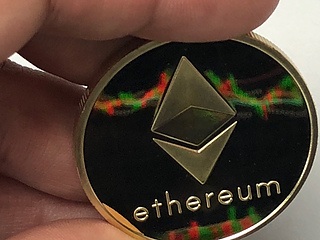Largest Ether mining pool Ethermine opens new ETH staking service
|
The new service offers Ethermine members a chance to collectively stake their ETH and earn 4.43% interest annually on top of their ETH deposits. As little as 0.1 ETH ($159) required to enter.
Ahead of the rapidly approaching Ethereum (ETH) Merge on Sept. 15, Ethermine, the world’s largest Ethereum mining pool has unveiled a new staking pool for users. Notably however, it is not available to U.S. miners
The new service offers Ethermine members a chance to collectively stake their ETH and earn interest on top of their deposits. As little as 0.1 ETH ($159) required to enter. However the smaller the holding, the greater the fee. The platform is currently offering stakers an annual ETH interest rate of 4.43%.
At the time of writing, 393 Ether worth roughly $626,000 at current prices has been invested into Ethermine's new pool.
Staking pools such as these hold significance as they offer competitive interest rates and a lower barriers of entry than solo staking as node operators, which requires at least 32 ETH ($51,000) to operate a node. In comparison, to Ethermine's interest rate, staking on Ethpool as a node operator garners an annual interest rate of 4.6%.
The switch to offer staking is something of a pivot for Ethermine which currently operates as a multi-currency mining pool, allowing users to mine ETH, Zcash, Ethereum Classic (ETC), Beam (BEAM), Ravencoin (RVN) and Ergo (ERGO).
After the merge, ETH mining will be phased out as the network changes from a proof of work (PoW) mining model to proof-of-stake (PoS) staking model.
At time of writing there are 222,657 active miners on Ethermine that account for a combined hash rate of 261.1 terra hashes per second (TH/s). After Sept. 15 the pool will only continue to support the PoW mining of Ethereum Classic (ETC), Ravencoin (RVN), Ergo (ERGO), and Beam (BEAM).
End of the Mining Era
Miner dashboards will have a Merge countdown clock and minerscan keep mining ETH up until the timer hits zero.
ETH miners will soon be replaced with PoS validators, which could help cut the ETH network consumption by 99%.
However, some in the ETH miner community have pushed to keep the current PoW consensus mechanism because the shift will make their high powered and costly mining rigs redundant.
Other high profile members of the crypto community have also been critical, arguing the changes will cause negative impacts beyond the loss of mining.
The current PoW system is an energy intensive process where miners harness large amounts of computer power to solve complex puzzles, validate transactions and earn ETH rewards.
Under the PoS model, participants or validators lock up set amounts of cryptocurrency in a smart contract on the blockchain; their stake helps secure and decentralize the network.
Information on these pages contains forward-looking statements that involve risks and uncertainties. Markets and instruments profiled on this page are for informational purposes only and should not in any way come across as a recommendation to buy or sell in these assets. You should do your own thorough research before making any investment decisions. FXStreet does not in any way guarantee that this information is free from mistakes, errors, or material misstatements. It also does not guarantee that this information is of a timely nature. Investing in Open Markets involves a great deal of risk, including the loss of all or a portion of your investment, as well as emotional distress. All risks, losses and costs associated with investing, including total loss of principal, are your responsibility. The views and opinions expressed in this article are those of the authors and do not necessarily reflect the official policy or position of FXStreet nor its advertisers.